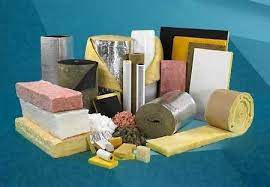Thermal insulation materials are the unsung heroes of our homes and buildings, quietly working behind the scenes to keep us comfortable. While they may not be the most glamorous aspect of construction, they play a crucial role in maintaining a controlled indoor environment, ensuring energy efficiency, and enhancing our overall quality of life. In this comprehensive guide, we will explore the fundamentals of Thermal Insulation Materials, their significance, and the various options available.
Understanding the Importance of Thermal Insulation
Before delving into the specifics of insulation materials, it’s essential to grasp the significance of thermal insulation in buildings. Thermal insulation serves several essential purposes:
Energy Efficiency
Proper insulation reduces the amount of heat transfer between the interior and exterior of a structure. By doing so, it minimizes the need for heating or cooling, ultimately leading to lower energy consumption and reduced utility bills.
Comfort
Insulation materials help maintain a comfortable indoor environment by stabilizing temperatures. In colder months, they keep indoor spaces warm, while in hot weather, they prevent excessive heat from entering, ensuring a pleasant living or working environment.
Environmental Impact
Energy-efficient buildings with effective thermal insulation contribute to reduced greenhouse gas emissions and a smaller carbon footprint. This is a critical consideration in our efforts to combat climate change and promote sustainability.
Protection
Thermal insulation materials also serve to protect buildings from the elements. They help prevent moisture infiltration, which can lead to structural damage, mold growth, and other issues.
The Key Properties of Thermal Insulation Materials
To understand the various insulation materials available, it’s essential to consider their key properties, which determine their effectiveness in providing thermal resistance (R-value) and other performance factors:
Thermal Conductivity
Thermal conductivity, often referred to as k-value, measures how effectively a material conducts heat. Lower values indicate better insulation properties.
Density
The density of an insulation material affects its thermal performance. Low-density materials tend to be better insulators because they contain more trapped air, which resists heat transfer.
R-Value
The R-value is a crucial factor when evaluating insulation materials. It quantifies a material’s ability to resist heat flow. Higher R-values signify better insulation performance.
Fire Resistance
In construction, fire-resistant insulation materials are crucial for safety. Fire-resistant materials can help slow the spread of flames in the event of a fire.
Moisture Resistance
Insulation materials must resist moisture to maintain their insulating properties and prevent issues like mold growth. Moisture resistance is particularly important in humid environments.
Common Types of Thermal Insulation Materials
There is a wide range of thermal insulation materials available, each with its own unique characteristics and applications. Here are some of the most common types:
Fiberglass Insulation
Fiberglass insulation consists of fine glass fibers and is one of the most widely used insulation materials. It offers good thermal resistance, is cost-effective, and is relatively easy to install.
Foam Board or Rigid Foam Insulation
Rigid foam insulation boards are lightweight and offer excellent thermal resistance. They come in different types, including expanded polystyrene (EPS), extruded polystyrene (XPS), and polyisocyanurate (polyiso).
Spray Foam Insulation
Spray foam insulation is a versatile option that expands upon application to create an airtight seal. It offers superior insulation properties but can be more expensive.
Mineral Wool Insulation
Mineral wool insulation, which includes rock wool and slag wool, is made from natural or recycled materials. It is non-combustible and offers excellent fire resistance.
Reflective Insulation
Reflective insulation consists of reflective materials that reflect radiant heat, helping to keep spaces cooler in hot climates. It is often used in attics and roofs.
Radiant Barrier
A radiant barrier is a type of reflective insulation that is typically installed in attics to reflect radiant heat. It helps keep buildings cooler in the summer and warmer in the winter.
Considerations for Selecting Thermal Insulation Materials
Choosing the right insulation material for a specific project involves considering a variety of factors:
Climate
The local climate and weather conditions play a significant role in determining the most suitable insulation material. Cold climates may require different materials than hot and humid regions.
Building Design
The design and construction of a building influence the type of insulation needed. For instance, cavity wall insulation is suitable for new construction, while attic insulation may be needed for existing homes.
Building Codes
Local building codes and regulations often dictate the minimum insulation requirements for new construction and renovations. It’s essential to comply with these guidelines to ensure safety and efficiency.
Budget
Cost is a critical consideration. Some insulation materials may be more expensive upfront but offer long-term energy savings that outweigh the initial investment.
Environmental Impact
For those with environmental concerns, choosing insulation materials with high recycled content or those made from sustainable resources is an important consideration.
Installation and Maintenance
Proper installation is key to ensuring the effectiveness of thermal insulation materials. Improper installation can create gaps or voids that allow heat transfer. Regular maintenance, such as inspecting for damage or moisture infiltration, is also essential to preserve the insulation’s integrity.
Conclusion:
Thermal insulation materials are the unsung heroes of energy efficiency, comfort, and sustainability in our buildings. Understanding the basics of these materials, their properties, and the various options available is essential for making informed choices when it comes to construction, renovation, or improving the energy performance of our homes and commercial spaces.
By prioritizing the right thermal insulation materials and following best practices in their installation, we can enjoy the benefits of lower energy costs, increased comfort, and a reduced environmental footprint. These materials may not be the most glamorous aspect of construction, but they play a pivotal role in the way we live and build for a better future.







